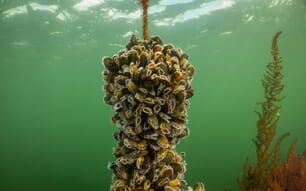The short fishing season is part of the recovery plan agreed at international level to bring back the Bluefin tuna stock to sustainable levels.
European Commissioner for Maritime Affairs and Fisheries, Maria Damanaki, said: "The EU has been working relentlessly to protect Bluefin tuna: we have reduced our fishing fleet, we have tightened controls and we have played a consistently active role within the International Convention for the Conservation of Atlantic Tuna which is responsible for managing this fishery. That helped to bring the Eastern Atlantic Bluefin tuna stock back from the brink of extinction. I am confident that we are on the right path."
This year, Croatia will be a full part of the EU fleet for the first time. Consequently the number of purse seine vessels has increased and the EU quota for 2014 has risen by five per cent to 7.939 tonnes. The other Member States actively involved in the Bluefin tuna fishery are Spain, France, Italy, Greece, Portugal, Malta, and Cyprus. The eight countries share the EU quota, with Spain and France having the largest parts.
To ensure that no overfishing is taking place, a strict control and inspection programme has been put in place. To ensure high control standards, this programme sets concrete control priorities and benchmarks. It involves a significant deployment of inspectors, patrol vessels and aircrafts coordinated by the European Fisheries Control Agency (EFCA) and the Member States concerned.
The European Commission also monitors catches and analyses Vessel Monitoring System data (a satellite based control system) on a constant basis to ensure that all rules, and particularly the individual vessels' quotas, are fully respected.
The Bluefin tuna fishery is regulated by the International Commission for the Conservation of Atlantic Tunas (ICCAT) where the EU and member states are members. The close collaboration with EFCA, Member States and other ICCAT Contracting Parties, means that all necessary measures are being taken to support the stock's recovery plan and its long term sustainability.



